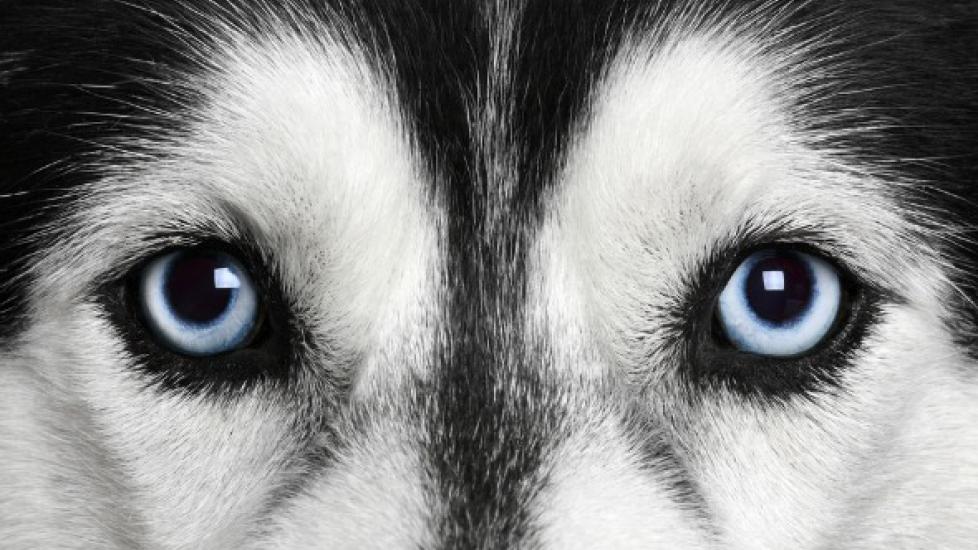Corneal Disease (Inherited) in Dogs
Corneal Dystrophies in Dogs
Corneal dystrophy is an inherited progressive condition which affects both eyes, often in the same way. The cornea, the clear outer layer of the front of the eye, is most affected. This disease is not associated with other diseases, and is relatively common in dogs.
There are three types of corneal dystrophy, categorized by location: epithelial corneal dystrophy, where cell formation is affected; stromal corneal dystrophy, where the cornea will become cloudy; and endothelial corneal dystrophy, where the cells of the lining of the cornea are affected.
Symptoms and Types
Epithelial corneal dystrophy:
- Possible corneal spasms
- Vision is normal
- White or gray circular or irregular opacities or rings on cornea
- Age of onset six months to six years
- Slow progression
- Shetland sheepdogs are predisposed
Stromal corneal dystrophy:
- Vision usually normal, although it may be reduced with advanced diffuse opacity
- There may be oval or circular opacities: white, gray or silver
- Diffuse opacity
- Annular (doughnut-shaped) opacity
- Strikes young adult dogs
Dog breeds that are predisposed to epithelial and stromal dystrophies:
- Afghan hound
- Airedale terrier
- Alaskan malamute
- American cocker spaniel
- Beagle
- Bearded collie
- Bichon frise
- Cavalier King Charles spaniel
- German shepherd
- Lhasa apso
- Mastiff
- Miniature pinscher
- Rough collie
- Siberian husky
- Samoyed
- Weimaraner
- Whippet
Endothelial corneal dystrophy:
- There is a swelling of the cornea with fluid blisters developing on the cornea
- Vision may be impaired with advanced disease
- Dogs are typically middle-aged or older at the onset of clinical signs; a female predilection is also suggested
- Affects young animals
Dogs breeds that are predisposed to corneal dystrophy:
- Boston terriers
- Chihuahuas
- Dachshunds
- May affect other breeds
Causes
Epithelial
- Degenerative or innate abnormalities of the cornea
Stromal
- An innate abnormality of the cornea
Endothelial
- Degeneration of lining of the cornea
Diagnosis
Your veterinarian will perform a thorough physical exam on your dog, including an ophthalmic exam. Your veterinarian will order a blood chemical profile, a complete blood count, an electrolyte panel and a urinalysis. will need to provide a thorough history of your dog's health leading up to the onset of symptoms.
Slit lamp microscopy will aid significantly in differentiating the type of corneal dystrophy present, and a fluorescein stain, a non-invasive dye that shows details of the eye under blue light, will be used to examine the eye for abrasions, and to define the shape of the cornea so that your veterinarian can diagnose the corneal dystrophy. Fluorescein dye enables visualization of any corneal ulcers that may be present; these types of ulcers occur with endothelial and epithelial corneal dystrophy. Fluorescein dye is inconsistent in its ability to aid in diagnosis of endothelial corneal dystrophy, and is not of much use in the diagnosis of stromal corneal dystrophy, but it can be helpful in the diagnosis of epithelial corneal dystrophy. A tonometer will be used to measure the interior pressure in your dog’s eyes so as to rule out glaucoma as a possible cause of corneal swelling.
Treatment
If your dog has corneal ulcers, they will treated with antibiotic eye medications. Stromal corneal dystrophy usually does not require treatment. Endothelial corneal dystrophy may be treated by using contact lenses over your dog's eyes. Epithelial corneal tags may be removed, if present. Another possible treatment for endothelial corneal dystrophy is flap surgery of the conjunctiva (the lining of the eyeball and the back surface of the lids). While a corneal transplant may be beneficial, results are inconsistent.
Living and Management
Your dog will probably always have some cloudiness to its eyes, even when treatment has been successful. However, if you notice that your dog’s seems to be in pain because of its eyes (e.g., blinking, watering of the eyes) contact your veterinarian, as ulcers may be developing on the cornea. This is prevalent with endothelial and epithelial corneal dystrophy. It is possible that your dog’s vision will remain normal despite corneal dystrophy.
